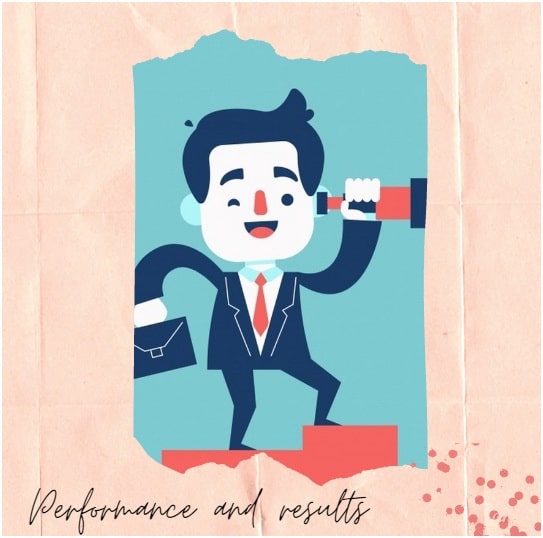
A good leadership contributes a lot in the success of any organization. Good leaders put their personal gains aside and work with the team to achieve the end-goal. They understand the value of growing together and work hard to hone the strengths and the talents of the individuals working under his leadership.
On the other hand, a bad leader focuses on building his own self. He is result-oriented and tries to achieve his goals one or the other. He uses his power thoughtlessly which not only affects the atmosphere of the workplace but also puts unnecessary pressure on the team to perform. Each of these types of leaders has a huge impact on workplace culture.
How good leadership impacts workplace culture?
Good leadership qualities have an overall great impact on the team. By exhibiting good leadership practices, leaders set the tone for the team members which in turn brings pleasant changes to the workspace culture.
It will not be wrong to call the culture of the company the fuel to the business operations. Employees, on the other hand, are the engine of the business strategy. This creates an overall balance as that allows the employees to groom as leaders and collaborate with the team to bring about fruitful outcomes. According to business giant Warren Buffet, coordination is one of the keys of success.This leads to the creation of this balance between culture and work ethics. This also leads to the development of trust that shows in the results.
The ideal situation of every business is culture powering the purpose. When this happens, every member of the team becomes a leader. The job of a good leader is to:
- Determine if all the team members are aware of the purpose and the mission of the organization.
- Make sure each of the members feels confident in his abilities and is ready to contribute to the growth of the organization.
- Ensure each member of the team knows what is he contributing to and why.
Today we are going to discuss how good leaders who deliver differ from the leaders who destroy. So, stay with us.
Exchange of information:
Good leaders share maximum information with the team members:

The first step of leading an organization towards success is to be transparent with the employees. Good leaders believe in being completely honest with their clients as well as their employees. They understand how important this factor is to succeed. A good leader begins every project with a plan. He is clear about his objectives and the direction the entire team needs to follow. He discusses his plan with the team to ensure that every member understands the value of his efforts that lead to the achievement of the higher goal. Before, moving any further, he makes sure that the entire team is on the same page.
- Bad leaders share minimum information with the team members:
A bad leader is never fair with his team members. He never shows them the bigger picture. He only briefs them about their roles and set them to chase an unknown goal. He believes in growing individually. The growth of the team members or that of the organization doesn’t matter to him.
The Use of power:

- Good leaders make vigilant and mindful use of power:
A good leader always adheres to his morals and appreciates how he got to where he is at the moment. He doesn’t let the power he holds to get to his head. He understands how a false sense of superiority can affect the atmosphere of the workplace and create a communication gap between him and his team members. No matter how small the task is, he takes it with enthusiasm. This sets a good example for all the team members and they don’t shy away from doing the grunt work.
- Bad leaders thoughtlessly use their power:
One of the toxic traits that the bad leaders exhibit is a false sense of superiority. It clearly shows in the way they conduct their work. They flaunt their success which eventually distances them from the individuals who work below them.
Motivation:

- Good leaders create conditions to flourish motivation:
Good leaders genuinely feel good when the team members perform well. They keep the atmosphere stress-free while driving the team forward to achieve an objective. They consider inspiration, enthusiasm, passion and motivation the driving force for any organization. They understand how making the team members feel valuable will motivate them to perform even better.
- Bad leaders use pressure and hierarchy as the force to drive their team:
A bad leader never provides team members with proper feedback. He never tells them whether or not their efforts make a difference. He pressurizes them to perform better and never encourages potential development to overcome challenges and to achieve meaningful goals.
Performance and results:

- Good leaders keep a close eye on both performance and results:
For a good leader, only results don’t matter. His focus is on both the performance and the results. He makes sure that every individual on the team is performing to his full potential by giving them the space to think critically. He tries to help those who are failing to achieve their targets.
- Bad leaders are only focused on the results:
Bad leaders calculate every project in terms of profit and loss. They don’t think beyond achieving whatever the goals they have set and no matter how. They don’t care about the professional growth of the team members.
Tolerance for poor behaviour:

- A good leader stamps on poor behaviour:
A good leader holds himself to a high ethical standard. He also expects his team members to display the same demeaner. He stamps on poor behaviour no matter what the outcomes are.
- A bad leader tolerates poor behaviour:
An undesirable leader will never point out poor behaviour if he is getting the desired results.
Perception of Wins and failures:

- A good leader reviews both wins and losses equally:
The majority of us learn from our failures. However, reviewing successes is equally important to move ahead. A good leader reviews his success and failures with the same passion. After that, he devises a strategy that takes the organization towards victory.
- A bad leader interrogates failure and moves on from the wins:
A bad leader, on the other hand, dwells on his failures and move on from the wins. This affects the workplace atmosphere and it gets harder for the organization as a whole to move forward.
Setting goals in any direction to ensure motivation:

- A good leader sets goals to motivate:
Good leaders set SMART goals for their team. Here, SMART stands for (Specific, Measurable, Aggressive, Realistic, and Time-bound). By doing so they energize the employees, provide them a direction and motivate them to challenge their potential. They encourage them to think outside the box and adapt themselves to the rapidly changing corporate landscape.
- A bad leader sets harder to achieve goals:
A bad leader sets goals that would benefit him. He doesn’t care whether or not those goals are realistic. His aim is only to get things done. For him, pressure equals motivation.
Responsibility vs Accountability:

- A good leader talks about responsibility:
A good leader makes his team feels that each of them is a part of a big family. He makes them believe that it’s their responsibility to work towards the welfare of the organization. Through his passion and motivation, he makes them care for the organization they are working within.
- A bad leader only talks about accountability:
A bad leader uses fear as the driving power for his team. This way he creates a tense environment fuelled by fear for being held accountable for blunders.
Empower others:

- A good leader makes mindful use of his power:
A good leader effectively communicates his goals and the deadlines to the team members. He then gives them the authority to choose how they want to get the work done. He sets realistic expectations for employees to meet and encourage innovation and creativity.
- A bad leader is afraid of losing authority:
A bad leader limits the abilities of the team members by asking them to follow a set of rules he has put in place. This provides them a very little room to think critically and take decisions regarding the project.
Politics vs political:

- A good leader understands workplace politics:
A good leader is always prepared to deal with workspace politics. He makes decisions considering both sides of the picture. He doesn’t get personal. He tries to understand the situation and comes up with the best way to resolve the dispute.
- A bad leader is political:
A bad leader participates in workspace politics. He takes the side he feels is in his favor. He gets personal and doesn’t try to resolve the matter.
Final thought:
Every company needs a good leader to prosper. An undesirable leader not only adversely affects the workspace environment but also makes it hard to achieve business objectives. On the other hand, a good leader encourages the team members to grow along with the organization he is working for.
Author Bio:
I am Elice Max, a blogger who writes on emerging trends, pop culture, and lifestyle. One of my key areas of interest is money-saving, and leading a frugal life. Hypocritically, I do enjoy Broadway once in a while.
